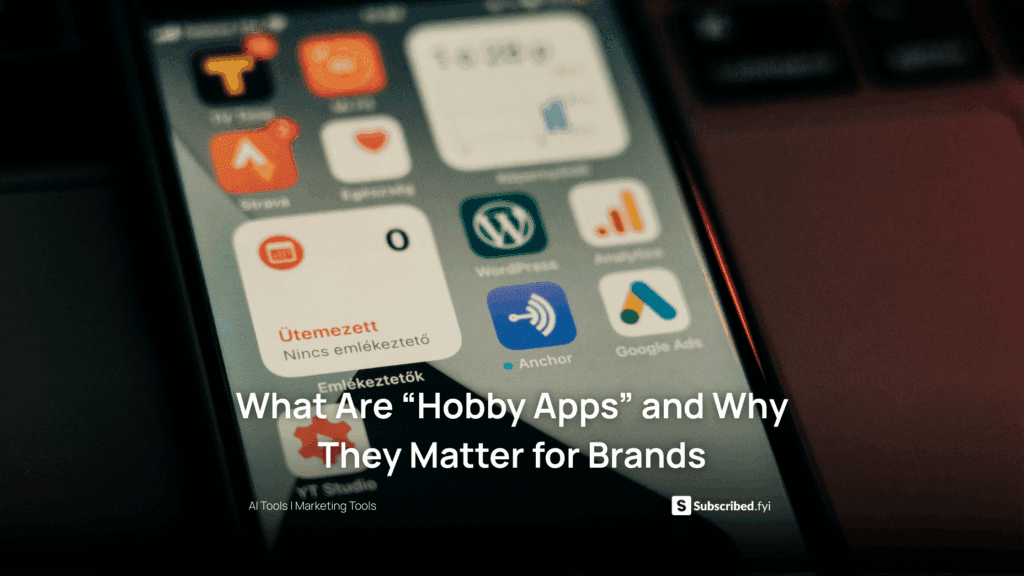Can Small Teams Use Serverless Logic Without Developers?
- WebOps Platforms Bug Tracking & Feedback Software Web Development & Design Website Builder


Small teams no longer need to hire backend experts to build scalable APIs and business logic. No-code platforms and AI-driven tools simplify serverless functions so you can connect services, process data, and automate workflows without writing a single line of code. You can explore no-code serverless solutions in the Vibe Coding directory and compare features of top builders on the AI-powered website builders list. Hostinger Horizons takes this further by bundling AI chat interfaces, sandbox environments, and 24/7 expert support into one platform—just describe your function in plain English, and watch your serverless logic come to life.
Serverless functions run on platforms like AWS Lambda or Firebase Functions without requiring you to manage servers or DevOps. This pay-as-you-go model scales automatically and lowers costs for small teams. With Hostinger Horizons, you issue chat prompts to set up authentication, deploy functions, and configure webhooks. The AI handles boilerplate code, environment variables, and live testing in the sandbox, so you can focus on building features that delight users.
Understanding Serverless Logic and No-Code Platforms
Serverless logic refers to stateless functions that run in the cloud in response to events—HTTP requests, database changes, or scheduled tasks. Unlike traditional servers, these functions automatically scale to handle spikes in traffic and only incur costs when they run. No-code platforms abstract away the underlying infrastructure, offering visual editors or AI-assisted workflows to design and deploy serverless functions.
No-code platforms come in many flavors, from visual flow-based editors to AI chat interfaces. Flow builders let you connect triggers, actions, and data transformations in a drag-and-drop canvas, while AI-driven tools generate function code based on natural-language prompts. Both approaches aim to democratize backend development, letting product managers, designers, and marketers automate processes without waiting on developers.
Benefits of Serverless Functions for Small Teams
Small teams benefit from serverless functions in several ways:
-
Zero Infrastructure Management: No need to configure servers, patch operating systems, or worry about scaling.
-
Cost Efficiency: You pay only for the compute time your functions use, which is ideal for low- to moderate-traffic applications.
-
Rapid Iteration: Deploy changes in seconds and test in real time, accelerating time to market.
-
Built-In Scalability: Functions automatically handle growing user loads without manual intervention.
These advantages make serverless logic an attractive choice for small teams seeking to build dynamic features—like sending transactional emails, processing form submissions, or connecting to third-party APIs—with minimal overhead.
Common No-Code Serverless Use Cases
Serverless functions underlie many everyday app features:
-
Form Processing: Validate user inputs, write data to databases, and send confirmation emails.
-
Payment Handling: Create secure payment intents, listen for webhook events, and update order statuses.
-
Notification Services: Trigger SMS or push notifications when events occur, such as new messages or reminders.
-
Data Transformations: Resize images, convert file formats, or perform calculations on uploaded data.
-
Scheduled Tasks: Run nightly data cleanups, send daily reports, or update third-party integrations on a schedule.
No-code builders offer prebuilt modules or prompts for these scenarios. With Hostinger Horizons, you can “create a function to process Stripe webhooks” or “schedule a daily backup of user data,” and the platform sets up the function code, environment variables, and logs automatically.
Getting Started with Serverless on AWS and Firebase
While no-code platforms simplify serverless, understanding the basics of popular providers remains valuable. AWS Lambda and Firebase Functions power millions of event-driven apps:
-
AWS Lambda: Supports multiple languages (Node.js, Python, Go) and integrates deeply with AWS services like S3, DynamoDB, and API Gateway.
-
Firebase Functions: Ideal for apps using Firebase Realtime Database or Firestore, with easy integration into Firebase’s authentication and hosting services.
To begin manually, you’d create IAM roles, define function triggers, and write code to handle events. No-code platforms abstract this: you grant API permissions in the console, then use visual blocks or AI prompts to design your function logic. Hostinger Horizons streamlines even further by generating boilerplate for both AWS and Firebase functions and deploying them under the hood.
Handling Authentication and Security
Protecting your serverless functions from unauthorized access is crucial. Common methods include:
-
API Keys: Simple tokens passed in headers to identify authorized requests.
-
OAuth 2.0: Industry-standard flow for granting limited access to resources on behalf of users.
-
JWT Tokens: Signed JSON Web Tokens that verify a user’s identity and permissions.
In no-code environments, you configure authentication by mapping tokens or API keys in the platform’s UI. For example, Hostinger Horizons prompts like “store my JWT secret” and “validate JWT in function header” manage token verification without manual code. The AI chat sets up middleware to check permissions and rejects unauthorized requests.
Implementing Webhooks and Event-Driven Flows
Webhooks push real-time data from third-party services into your functions. Setting them up manually involves creating endpoints, verifying signatures, and handling retries. No-code platforms offer webhook connectors where you simply register your endpoint URL in the third-party dashboard and connect it in the builder:
-
Create a Webhook Trigger: Define the function URL to receive events.
-
Configure Signature Verification: Use secrets for payload integrity.
-
Define Business Logic: Map JSON payloads to your actions—database writes, notifications, or downstream API calls.
Hostinger Horizons automates these steps. Ask the AI “generate webhook endpoint for Stripe event invoice.paid,” and it creates the function, verifies signatures, and updates your database accordingly. You test in the sandbox with sample webhook payloads before going live.
Testing and Debugging Without Developers
Robust testing and debugging are vital for serverless logic. Key practices include:
-
Unit Testing: Simulate function invocations with mock data.
-
Integration Testing: Trigger real events in a staging environment.
-
Log Monitoring: View execution logs, errors, and performance metrics.
No-code platforms integrate testing tools. With Hostinger Horizons, you click “run test” in the sandbox or invoke functions with sample payloads via AI chat. Logs appear in a real-time console, highlighting errors with stack traces and input data. This interactive feedback loop helps teams iterate on logic quickly.
Scaling and Cost Management
Serverless functions scale automatically, but costs can rise if functions run inefficiently. Best practices include:
-
Optimize Function Duration: Keep code lean to reduce compute time.
-
Manage Concurrency: Cap parallel executions to control burst charges.
-
Monitor Usage: Use dashboards to track invocations and duration.
Platforms like Hostinger Horizons provide built-in dashboards showing function metrics and cost estimates. You can set budget alerts: “notify me when monthly function costs exceed $50,” ensuring small teams maintain predictable expenses.
Best Practices for No-Code Serverless Projects
To maximize success, small teams should:
-
Use Clear Naming Conventions: Identify functions by purpose (e.g., processOrder, sendEmail).
-
Maintain Version History: Track changes and roll back problematic updates.
-
Modularize Logic: Break complex workflows into multiple focused functions.
-
Implement Security Measures: Encrypt environment variables and enforce least privilege.
-
Automate Deployments: Use CI/CD pipelines or AI-based deployment workflows to ensure consistency.
No-code platforms help enforce these practices through structured templates and AI guidance. Hostinger Horizons, for example, auto-creates version snapshots and lets you restore any previous state with a single click.
Hostinger Horizons’ Approach to Serverless Logic
Hostinger Horizons redefines no-code serverless by merging AI-assisted function generation, sandbox testing, and managed hosting into one environment. You simply describe your logic—such as “validate user input, store data in database, and send a confirmation email”—and the AI builds the function, sets up environment variables, and deploys it behind secure HTTPS endpoints. Horizons supports over 80 programming languages for custom logic, while abstracting complexity so non-developers can create reliable backends.
The platform’s sandbox environment lets you test functions in isolation or within end-to-end workflows, ensuring stability before live release. Horizons’ AI chat also helps you automate mundane tasks like setting up IAM roles, rotating secrets, and configuring API permissions. With 24/7 expert support included, small teams can handle advanced serverless scenarios—like connecting to AWS Lambda or Firebase Functions—without needing a dedicated developer.
Bringing It All Together for Small Teams
Serverless logic empowers small teams to build powerful backends without the overhead of managing servers or hiring developers. By utilizing no-code platforms with AI-driven assistants—especially Hostinger Horizons—teams can design, test, and deploy serverless functions in minutes. From authentication and webhooks to scaling and monitoring, every aspect of serverless is simplified through natural-language prompts and real-time sandbox testing.
Whether you’re processing payments with Stripe, sending notifications via Twilio, or transforming data on the fly, serverless functions offer reliability and cost efficiency. No-code integration tools make these capabilities accessible to non-technical users, democratizing backend development and accelerating project timelines.





